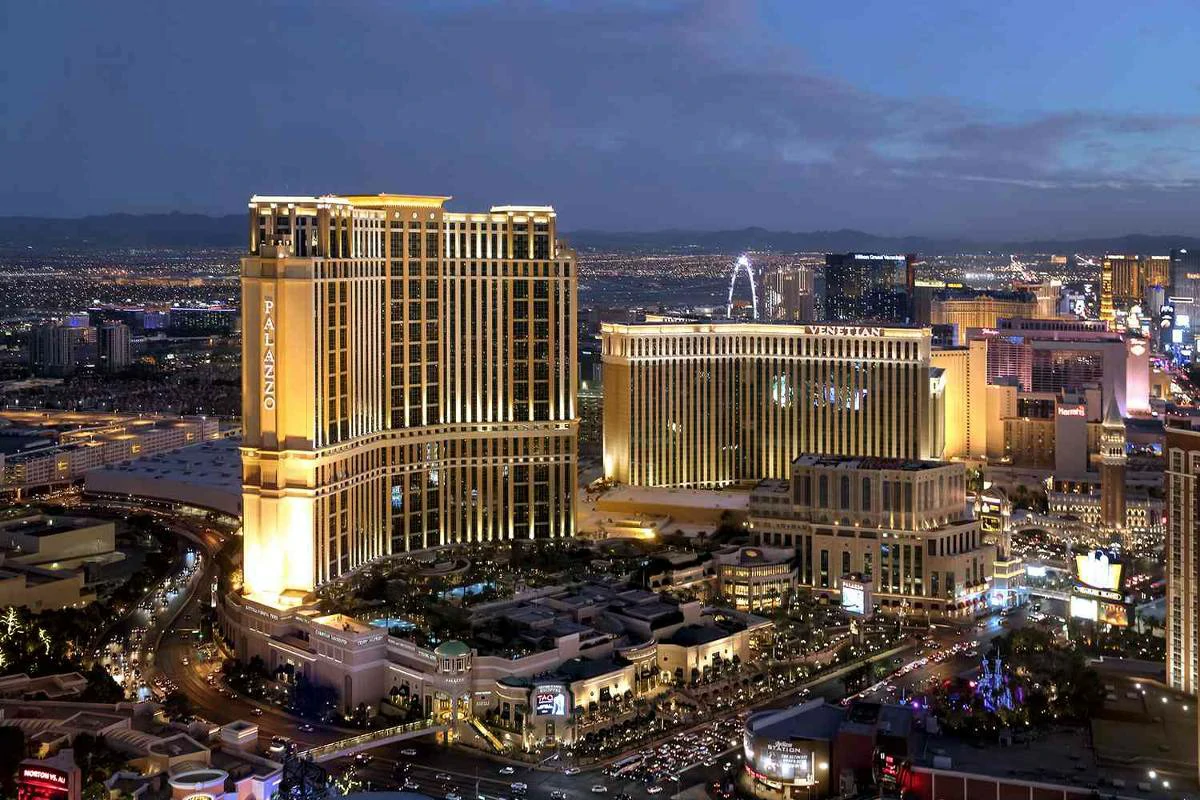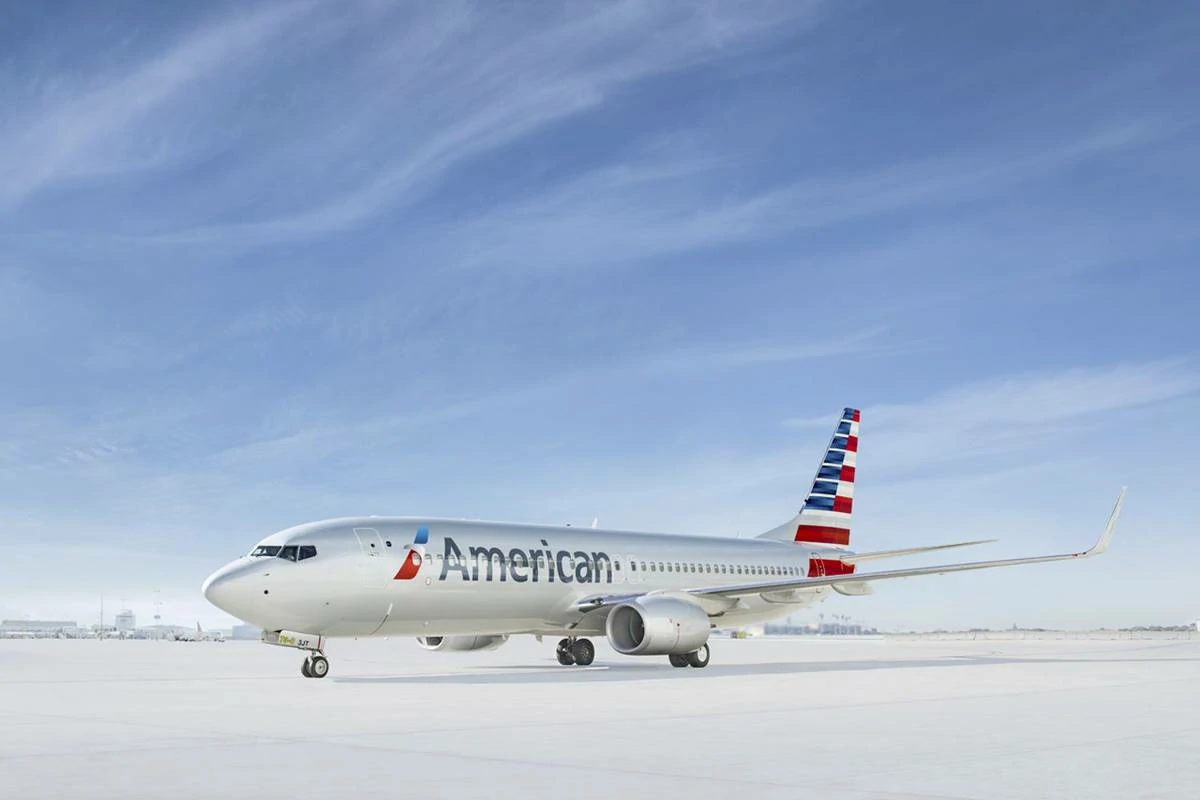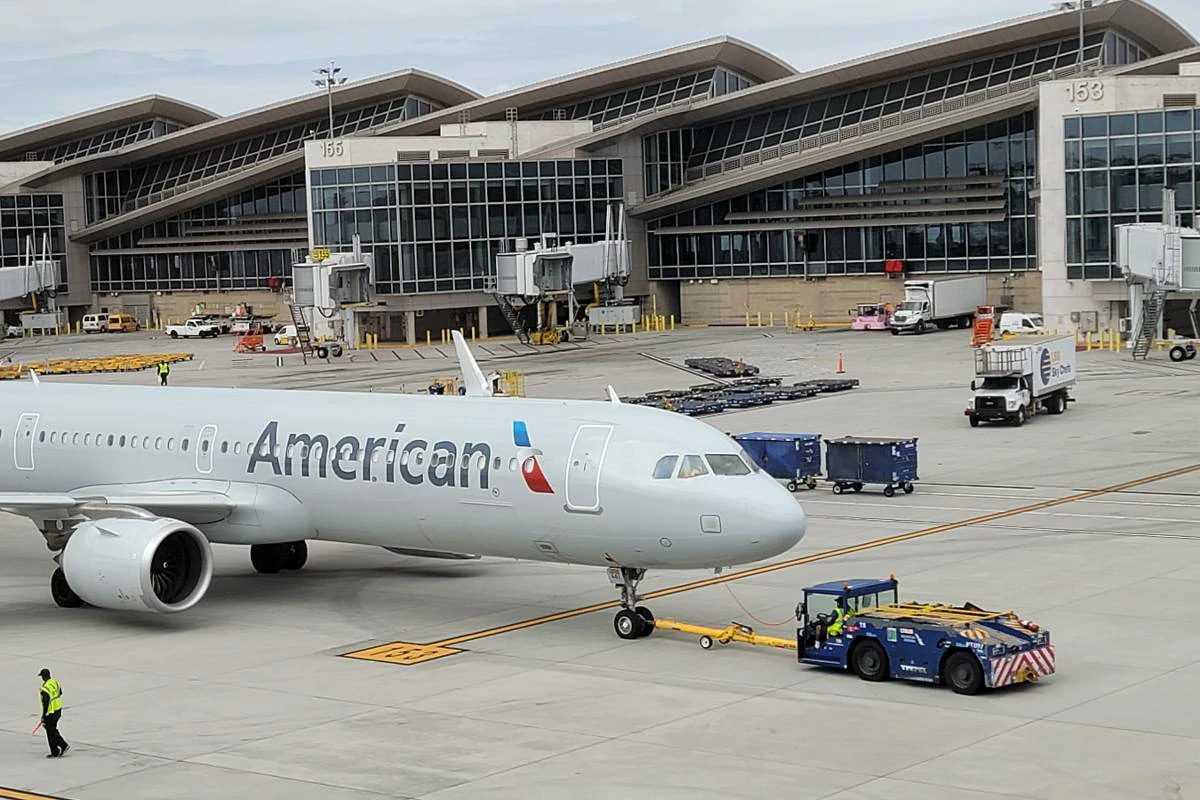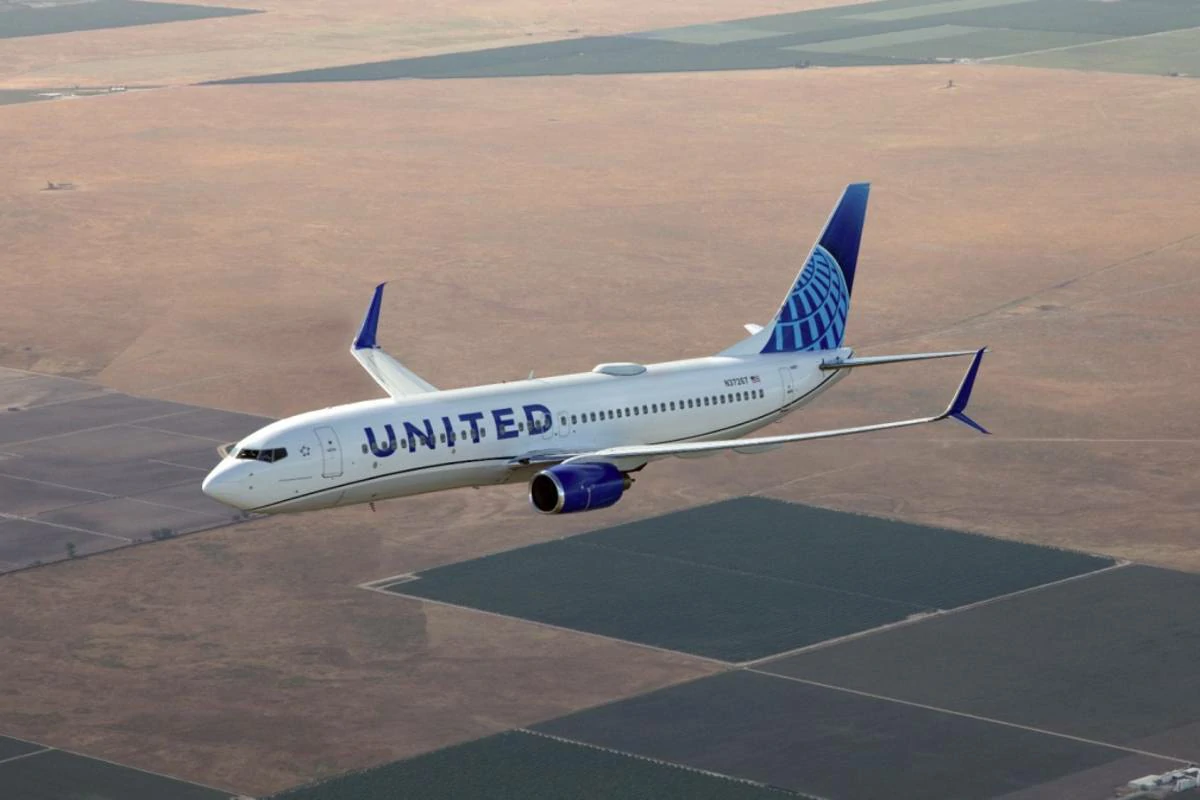What is the largest hotel in the United States? Answer is – The Venetian Resort in Las Vegas, Nevada, holds the title of the largest hotel in the United States. This massive complex, comprised of The Venetian and The Palazzo, features a staggering 7,117 rooms. The resort offers a luxurious experience inspired by the Italian city of Venice, complete with indoor canals, gondola rides, and replicas of famous Venetian landmarks.
Summary
- The Venetian Resort in Las Vegas is the largest hotel in the United States.
- The complex boasts over 7,000 rooms across The Venetian and The Palazzo.
- The resort’s design is inspired by Venice, Italy, with canals and gondola rides.
- Guests can enjoy world-class dining, shopping, and entertainment options.
What is the largest hotel in the United States?
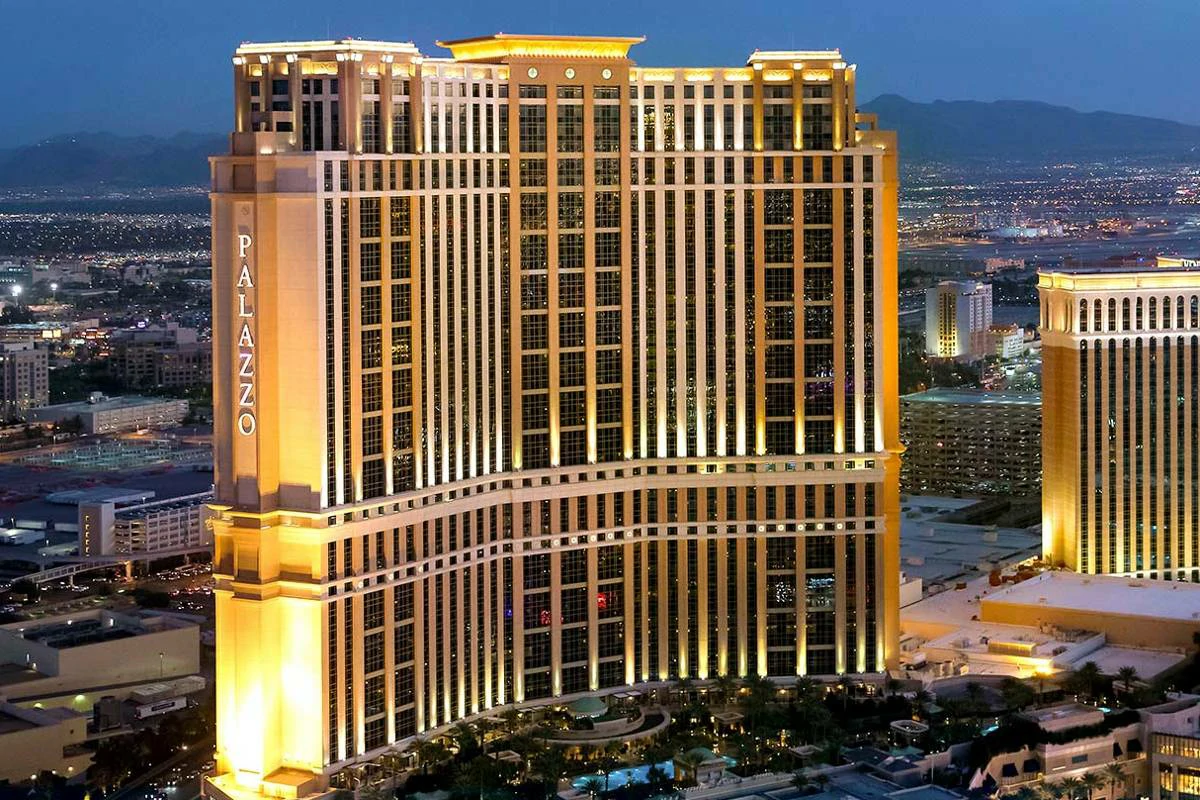
When we imagine a large hotel, images of sprawling lobbies, seemingly endless corridors, and bustling crowds of guests often come to mind. But what truly defines a “large hotel”? Is it simply the sheer number of rooms, or do other factors play a significant role? In the world of hospitality, understanding the concept of large hotels is essential for travelers, business planners, and industry professionals alike.
Defining the Concept of a Large Hotel
While there’s no single, universal definition, large hotels generally share several key characteristics:
Room Count: The most obvious factor is the number of guest rooms. Hotels with upwards of 1,000 rooms often fall into the “large” category. However, in major cities with high demand, hotels with several hundred rooms might also earn this designation due to limited space.
Amenities: Large hotels often boast an extensive array of amenities designed to cater to diverse needs. These can include:
- Multiple dining options, from casual eateries to fine dining restaurants
- Swimming pools, fitness centers, and spas
- Retail shops and boutiques
- Entertainment venues like theaters, nightclubs, or casinos
- Dedicated business facilities, including conference rooms and ballrooms
Land Area: Large hotels frequently occupy substantial pieces of real estate, particularly in urban areas where space is at a premium. They may encompass multiple buildings, extensive grounds, landscaped gardens, and even golf courses in some cases.
Factors Determining Hotel Size
Several factors contribute to why some hotels become exceptionally large:
Location: Hotels in major tourist destinations or bustling business hubs tend to be larger to accommodate high visitor demand. Cities like Las Vegas, Orlando, and New York City are known for their mega-hotels.
Target Market: The intended clientele plays a role. Convention hotels often have a high room count to house large groups, while resorts may prioritize expansive grounds and recreational facilities to attract vacationers.
Brand Strategy: Certain hotel brands are associated with large-scale properties. Global chains often use their flagship hotels to showcase a wide range of services and amenities.
The Significance of Large Hotels in the Hospitality Industry
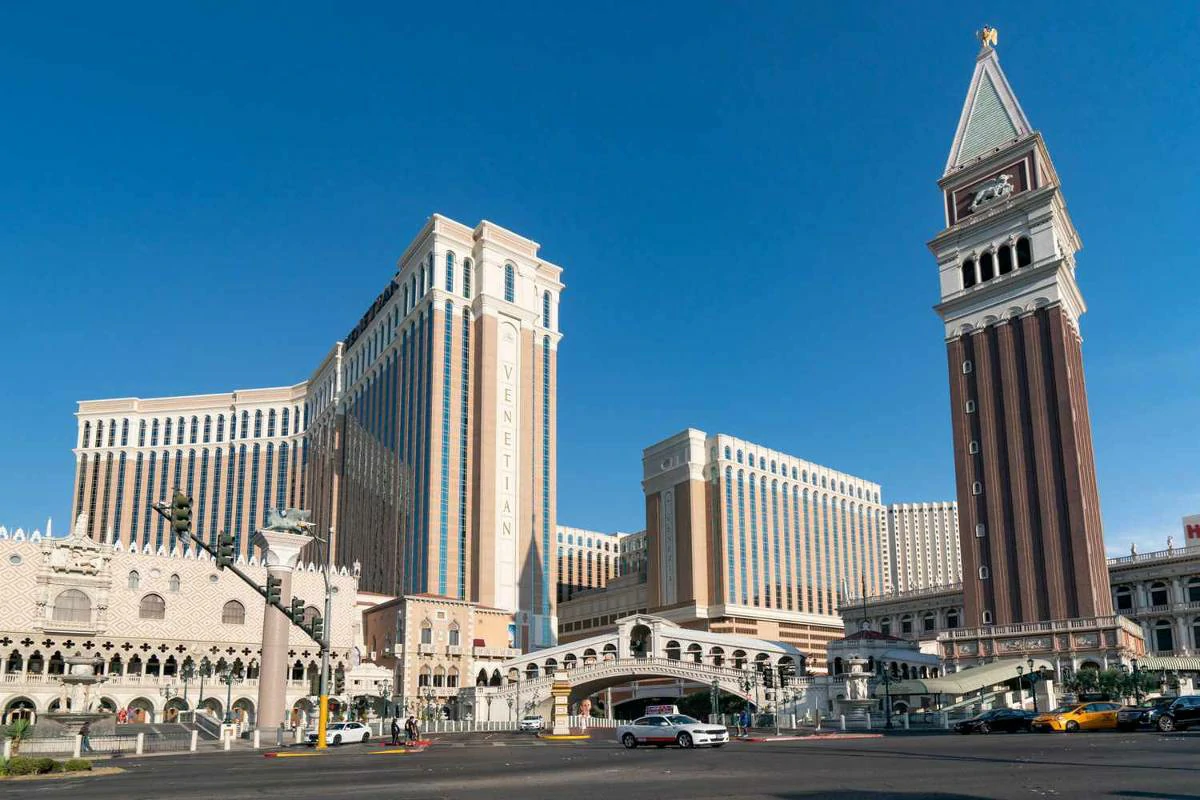
Large hotels hold a unique place in the travel and tourism landscape. They offer a number of advantages and play a vital role in several areas:
Economic Impact: Large hotels can act as major economic drivers, generating significant employment opportunities and tax revenue for their local communities.
Accommodating Large Groups: Conventions, trade shows, and major events often rely on the capacity and infrastructure provided by large hotels.
Diverse Experiences: The sheer scale of these hotels allows them to offer a vast range of experiences within a single complex, appealing to a broader spectrum of guests.
Sarah Anderson Expert Opinion
“Large hotels are microcosms within themselves,” explains Sarah Anderson, a veteran hospitality consultant with over 20 years of industry experience. “They have the potential to become destinations in their own right, fulfilling a variety of traveler needs while also contributing significantly to the local economy.”
The Largest Hotel in the United States
1. The Venetian Resort, Las Vegas
The Venetian Resort in Las Vegas, Nevada, firmly holds the title of the largest hotel in the United States.
This sprawling complex, which seamlessly blends The Venetian and The Palazzo towers, boasts an astonishing total of 7,117 luxurious suites.
The Venetian Resort is a testament to audacious vision and extravagant execution, transporting guests to the heart of Italy within the vibrant cityscape of Las Vegas.
History and Background
The Venetian Resort finds its roots in the former Sands Hotel, a legendary Rat Pack hangout demolished in 1996.
Visionary casino magnate Sheldon Adelson, chairman and CEO of Las Vegas Sands Corporation, spearheaded the ambitious development of The Venetian.
Inspired by the romance and allure of Venice, Italy, the resort opened its doors in 1999, forever altering the Las Vegas Strip landscape.
The addition of The Palazzo tower in 2007 further expanded the property’s footprint and room capacity.
Number of Rooms
A defining characteristic of The Venetian Resort is its sheer size. The hotel offers a staggering 7,117 all-suite accommodations.
Each suite is generously sized, starting at an impressive 650 square feet, providing guests with a luxurious and spacious living experience.
Design and Architecture
The Venetian Resort masterfully transports visitors to the enchanting city of Venice. Architectural details meticulously recreate iconic landmarks and evoke the timeless charm of its namesake.
Guests are greeted by a replica of St. Mark’s Campanile, while the interior boasts a breathtaking Grand Canal, complete with authentic Venetian gondolas.
The resort even features its own St. Mark’s Square, a central hub for dining, shopping, and entertainment.
Amenities and Features
The Venetian Resort provides a seemingly endless array of amenities and features designed to cater to every guest’s whim. Here’s a glimpse into its extravagant offerings:
Pools and Spas: Over ten pool experiences await, including the tranquil Canyon Ranch Spa + Fitness, offering a wide range of rejuvenating treatments.
Casinos: The expansive casino floor provides thrilling gaming opportunities for seasoned players and casual enthusiasts alike.
Restaurants: With over 40 world-class restaurants and bars, the resort is a culinary paradise, featuring celebrity chef establishments and diverse cuisines.
Shopping: The Grand Canal Shoppes offer a luxurious retail experience, boasting high-end boutiques and international designers.
Unique Attractions
Beyond its standard amenities, The Venetian Resort stands apart with its distinctly themed attractions:
Gondola Rides: Couples and families can embark on romantic gondola rides along the indoor Grand Canal, complete with singing gondoliers.
St. Mark’s Square: This vibrant piazza serves as the resort’s social hub, featuring live entertainment and street performers.
Mark Thompson Expert Opinion
“The Venetian Resort is not just a hotel; it’s a carefully curated immersive experience,” says travel writer and Las Vegas expert, Mark Thompson. “The attention to detail in recreating the Venetian atmosphere is remarkable, making it a destination even for those who aren’t staying on the property.”
Other Notable Large Hotels in the US
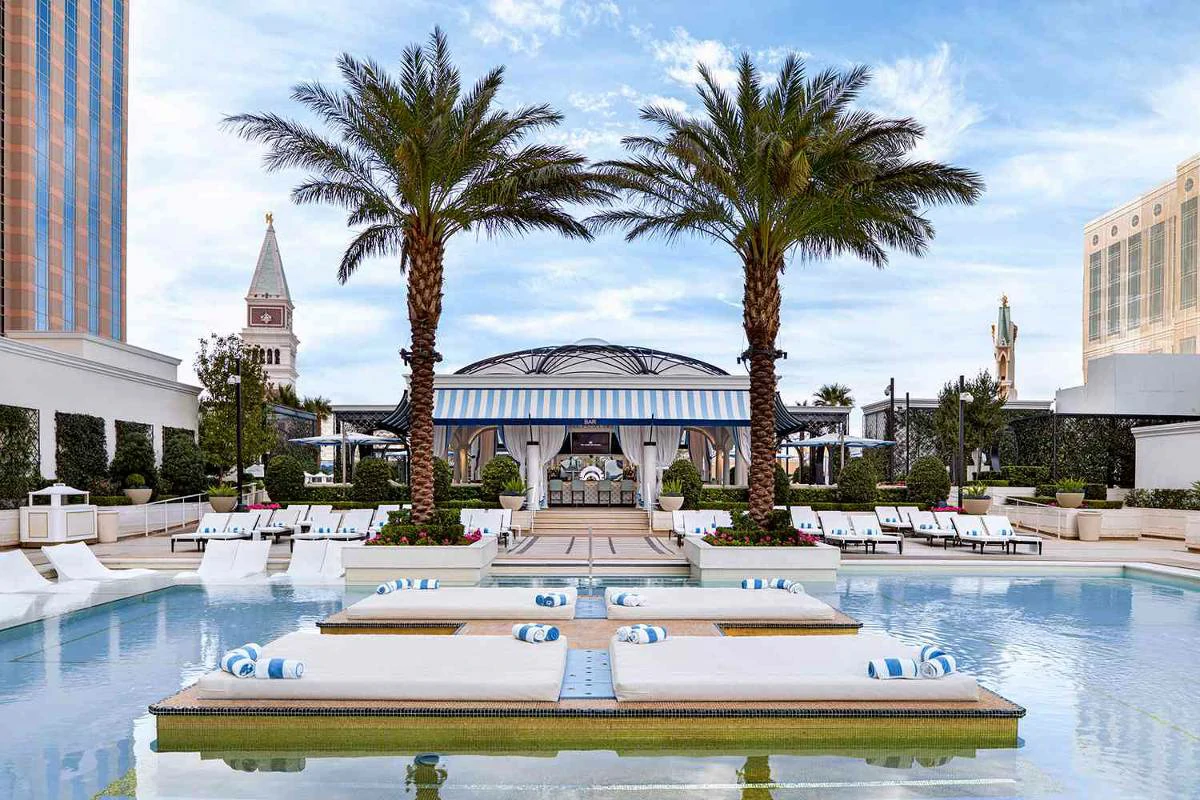
While the Venetian Resort takes the crown as the country’s largest, the Las Vegas Strip is a hotbed for other remarkably expansive hotels. Let’s spotlight two iconic properties:
1. MGM Grand Hotel & Casino, Las Vegas
The MGM Grand Hotel & Casino, with its signature emerald green towers, is a Las Vegas institution.
Featuring 6,852 rooms, it holds the title of the second-largest hotel in the United States and one of the largest in the world.
Opened in 1993, the MGM Grand originally boasted a Wizard of Oz theme, complete with a yellow brick road leading to the casino’s “Emerald City.”
While the theme has evolved, the hotel retains a sense of larger-than-life entertainment and boundless energy.
Rooms: The MGM Grand offers a variety of room types and suites to suit different preferences and budgets.
Amenities: The hotel complex encompasses a sprawling casino floor, multiple swimming pools, a sprawling spa and fitness complex, diverse dining options from food courts to upscale restaurants, and live shows ranging from comedy to major headlining acts.
Unique Features:
- The Grand Pool Complex: This aquatic oasis features four swimming pools, three whirlpools, cascading waterfalls, and a lazy river.
- Hakkasan Nightclub: This multi-level nightclub is a favorite among partygoers and electronic dance music enthusiasts.
- Topgolf Las Vegas: Visitors can enjoy this high-tech driving range experience.
2. Wynn & Encore, Las Vegas
The Wynn Las Vegas and Encore at Wynn Las Vegas represent the pinnacle of luxury and sophistication on the Strip.
These sister properties, while operating as separate entities, offer a combined total of 4,748 exquisitely appointed rooms and suites.
Developed by casino mogul Steve Wynn, the resort complex is renowned for its refined atmosphere, world-class art collection, and impeccable service.
Design & Architecture: The Wynn and Encore exude modern elegance. Curved towers with bronze-tinted glass, lush landscaping, and meticulously curated interiors create an atmosphere of understated opulence.
Amenities
- Pools: Both the Wynn and Encore boast beautifully designed pool complexes.
- Spas: The spas at Wynn and Encore consistently rank among the best in Las Vegas, offering indulgent treatments and relaxation spaces.
- Golf: The Wynn Golf Club is an exclusive 18-hole championship course set amidst the desert landscape.
- Shopping: The Wynn Esplanade features luxury boutiques such as Chanel, Louis Vuitton, and more.
Unique Attractions
- Lake of Dreams: This captivating free show combines water, lights, and music.
- Nightclubs: XS and Encore Beach Club are renowned for their high-energy atmosphere and world-class DJs.
Jessica Wells Expert Opinion
“The Wynn and Encore set the standard for detail-oriented hospitality. From the moment you step inside, it’s clear that every aspect of the guest experience has been carefully considered,” notes Jessica Wells, a hospitality industry analyst.
3. ARIA Resort & Casino, Las Vegas
Returning to the dazzling Las Vegas Strip, we encounter ARIA Resort & Casino, a stunning addition to the CityCenter complex.
With 4,004 luxurious rooms and suites, ARIA stands as another testament to the city’s penchant for grand-scale accommodations.
This AAA Five Diamond and Forbes Five-Star-rated property seamlessly blends high-tech amenities, sleek design, and personalized service.
Technology-Driven Experience: ARIA prides itself on integrating cutting-edge technology into the guest experience. In-room tablets allow for the control of lighting, temperature, and entertainment options.
Amenities:
- Pools: Three distinctive pool experiences await, including the adults-only LIQUID Pool Lounge.
- Spa & Salon: The Spa at ARIA offers a serene retreat with a wide range of revitalizing treatments and salon services.
- Fine Dining: ARIA boasts a collection of acclaimed restaurants, including Carbone, a classic Italian-American eatery, and Jean-Georges Steakhouse, showcasing refined American cuisine.
4. Disney’s Art of Animation Resort, Florida
Walt Disney World Resort in Florida is synonymous with magic and wonder.
Disney’s Art of Animation Resort expertly captures the playful spirit of beloved animated films, making it a favorite among families and Disney enthusiasts alike.
The resort features 1,984 themed family suites, immersing guests in the worlds of “Finding Nemo,” “Cars,” “The Lion King,” and “The Little Mermaid.”
Immersive Theming: Each section of the resort is meticulously designed to transport guests into their favorite animated films. Larger-than-life character statues, vibrant colors, and whimsical details bring these stories to life.
Amenities:
- The Big Blue Pool: This massive pool, modeled after the “Finding Nemo” universe, is the largest at any Disney resort hotel.
- Landscape of Flavors Food Court: Offers a variety of quick-service dining options catering to different tastes.
- Playground & Arcade: Children will have a blast with themed play areas and an arcade offering classic and modern games.
5. Gaylord Opryland Resort & Convention Center, Tennessee
Shifting our focus to Nashville, Tennessee, we discover the Gaylord Opryland Resort & Convention Center, a sprawling complex unlike any other.
With 2,888 rooms, this unique resort features nine acres of lush indoor gardens, cascading waterfalls, and a winding indoor river under expansive glass atriums.
The grandeur of Gaylord Opryland is deeply intertwined with its location, celebrating the vibrant music scene of Nashville.
Indoor Gardens & River: The heart of the resort lies in its breathtaking atriums, filled with diverse plant life, winding pathways, and the tranquil Delta Riverboat ride.
Amenities:
- SoundWaves: This upscale indoor/outdoor waterpark offers year-round aquatic fun with slides, pools, and dedicated adult areas.
- Relâche Spa: Guests can unwind with pampering treatments and wellness experiences.
- Dining & Entertainment: Over a dozen restaurants, bars, and live music venues keep guests entertained and well-fed.
Dr. Rachel Sutherland Expert Opinion
“Large resort hotels like Gaylord Opryland redefine the concept of a vacation destination,” says Dr. Rachel Sutherland, professor of hospitality management. “They become self-contained worlds, offering an incredible array of experiences without guests ever needing to step outside.”
What Does it Mean to be the Largest Hotel?
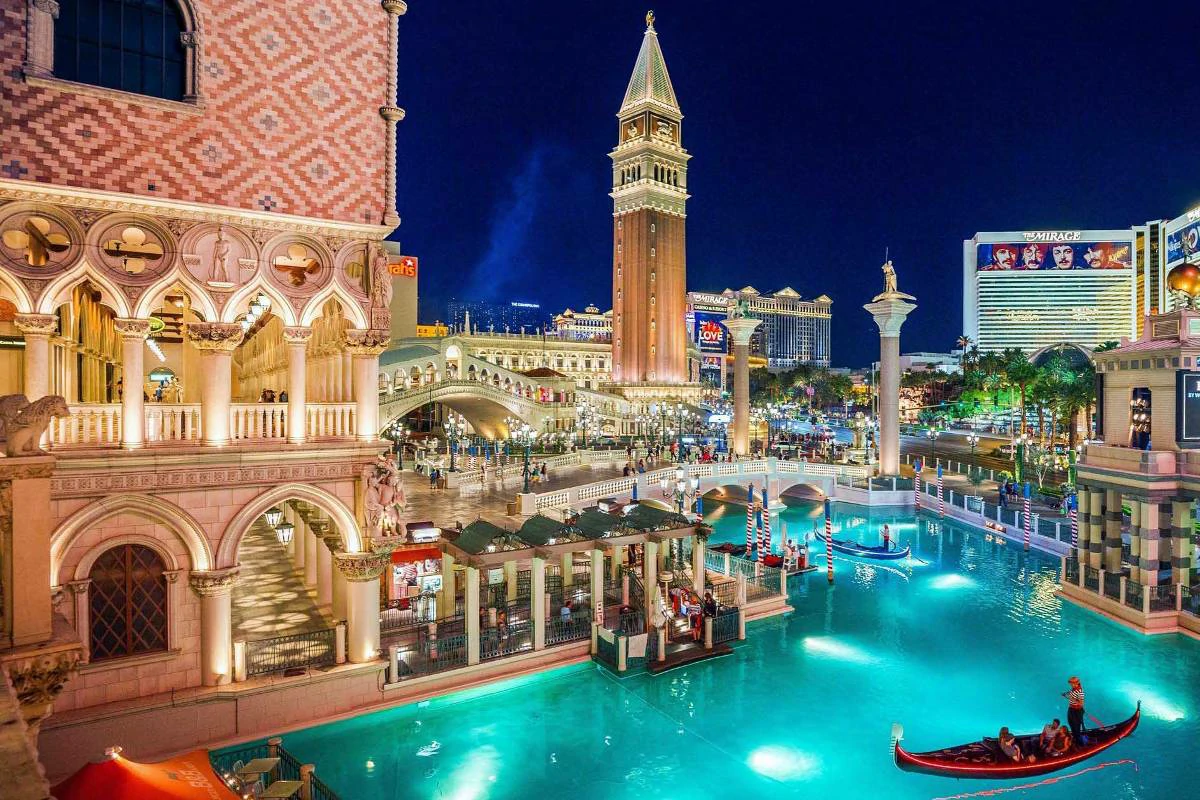
Beyond the sheer number of rooms, managing the largest hotels in the United States requires a unique set of operational strategies, creates a significant economic footprint, and plays an influential role in shaping tourism trends.
1. Operational Challenges
Staffing: Large hotels often employ thousands of individuals across various departments, including housekeeping, food and beverage, guest services, maintenance, and entertainment. Recruiting, training, and managing such a large workforce requires robust human resources systems and a strong leadership team.
Logistics: Ensuring smooth day-to-day operations in a hotel with thousands of guests is a complex logistical puzzle. This includes coordinating the flow of guests, managing housekeeping schedules for vast numbers of rooms, stocking supplies for numerous outlets, and anticipating potential maintenance needs across an expansive property.
Maintaining Guest Experience: Providing a consistently positive guest experience is paramount but can be challenging in large-scale hotels. Strategies like personalized communication, technology-driven solutions, and efficient problem resolution are essential to prevent guests from feeling lost in the crowd.
2. Impact on the Local Economy
Large hotels often act as significant economic catalysts for their respective locations:
Job Creation: These hospitality giants are major employers, providing jobs directly within the hotel as well as indirectly supporting local businesses that cater to hotel guests and staff.
Tax Revenue: Large hotels generate substantial tax revenue for cities and states, which benefits public services and infrastructure development.
Supporting Industries: Hotels rely on a network of local suppliers for goods and services, ranging from food and beverage distributors to landscaping and transportation companies. This creates a ripple effect, boosting economic activity throughout the region.
3. Attraction for Tourists and Conventioneers
Large hotels play a key role in attracting visitors to a destination, especially when it comes to conventions and major events.
Capacity for Large Groups: Conventions, trade shows, and corporate events often require hotels with ample guest room capacity and extensive meeting and event spaces. Large hotels are uniquely positioned to accommodate these groups.
Amenities and Entertainment: The diverse amenities offered by large hotels, such as multiple restaurants, pools, spas, and entertainment options, become major drawcards for both leisure and business travelers.
Destination Marketing: The largest hotels often become synonymous with their location. Their brand recognition and marketing efforts contribute to the overall tourism appeal of a city or region.
Mark Thompson Expert Opinion
“Large hotels are fascinating micro-economies,” says Mark Thompson, a veteran hospitality consultant. “Their success relies on striking a delicate balance between operational efficiency, personalized guest service, and contributing positively to the community in which they operate.”
FAQs
Are the largest hotels always the most expensive?
Not necessarily. While some of the largest hotels fall into the luxury category with high room rates, others offer a range of room types and price points to cater to diverse budgets. Factors like location, seasonality, and specific amenities can greatly influence the cost of a stay, even within the same hotel. It’s important to compare prices and factor in the value of included amenities when considering large hotels.
Do the largest hotels offer the best amenities?
Large hotels often boast an extensive array of amenities due to their scale and resources. However, “best” is subjective and depends on your priorities as a traveler. Smaller boutique hotels might excel in personalized service or unique design features, while large hotels might offer unparalleled convenience due to having multiple dining options, entertainment venues, and recreational facilities on-site.
What are some of the advantages and disadvantages of staying at a large hotel?
Advantages:
- Variety: Large hotels cater to diverse needs with multiple restaurants, bars, shops, pools, and activities.
- Convenience: Everything you could need is often within the hotel complex, reducing the need to venture out.
- Ideal for Events: Large hotels are well-equipped to host weddings, conferences, and group gatherings.
- Potential for Energy and Excitement: The sheer number of guests can create a vibrant and social atmosphere appealing to some travelers.
Disadvantages
- Can Feel Impersonal: The guest experience may lack the intimacy and personalized touch of smaller hotels.
- Potentially Crowded: Common areas like pools, restaurants, and lobbies might be crowded, especially during peak season.
- Navigation: Large properties can be disorienting for some guests, leading to longer walking distances within the hotel.
- Might Not Reflect Local Culture: Some large hotels, especially chain properties, have a standardized design that might lack the unique charm and local flavor of the destination.
Conclusion
The largest hotels in the United States represent remarkable feats of hospitality, offering a wide spectrum of experiences that attract visitors from around the world.
Whether it’s the opulence of Las Vegas resorts, the immersive theming of Disney properties, or the convenience of massive convention hotels, these properties play a significant role in the travel landscape.
While large hotels might not be the perfect fit for every traveler, understanding their advantages and potential drawbacks allows you to make informed decisions for your next vacation or business trip.
As a traveler, consider your priorities, travel style, and the specific amenities and atmosphere you seek to determine if a stay at one of these hospitality giants is the right choice for you.
